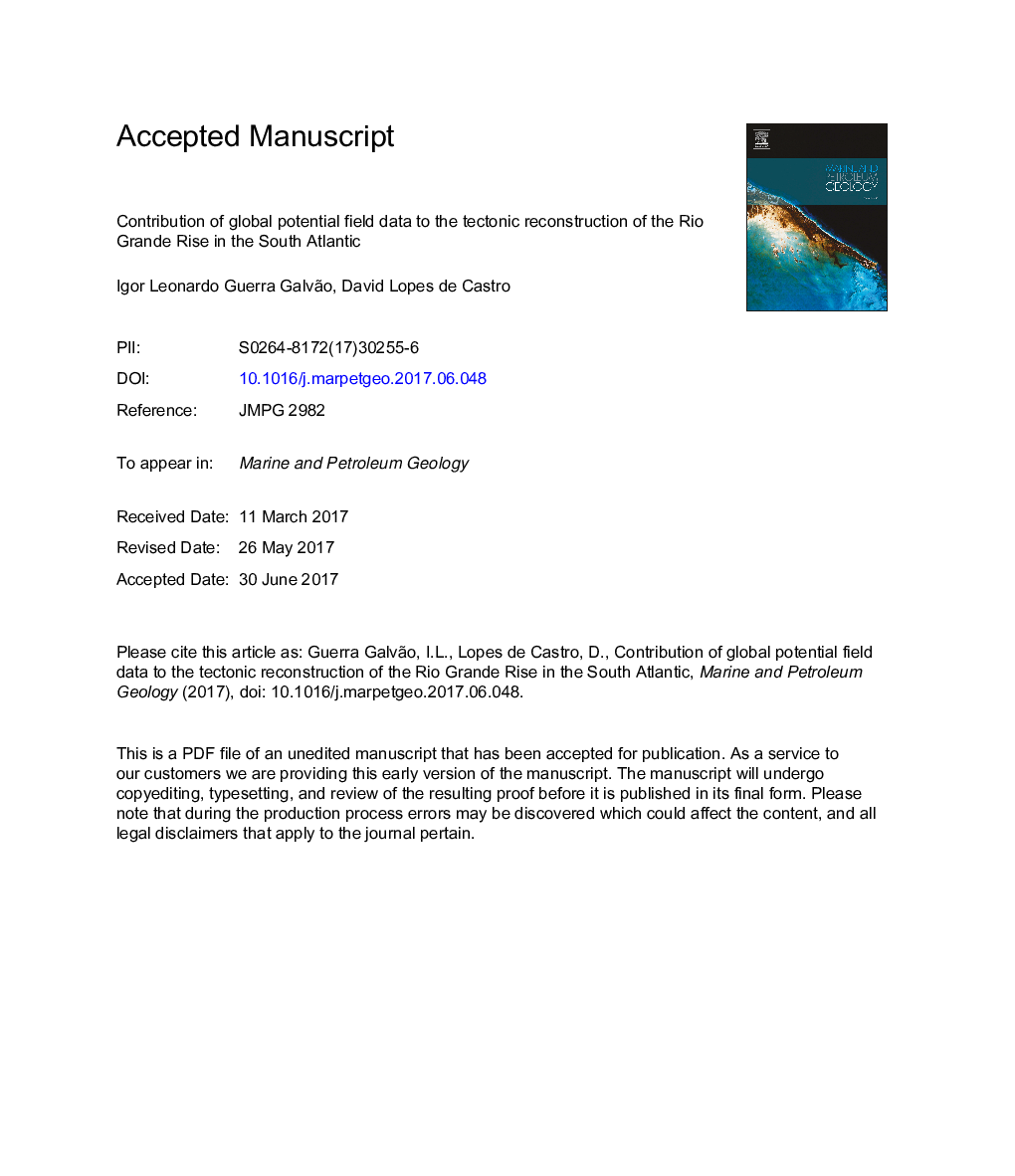| کد مقاله | کد نشریه | سال انتشار | مقاله انگلیسی | نسخه تمام متن |
|---|---|---|---|---|
| 5782015 | 1637141 | 2017 | 69 صفحه PDF | دانلود رایگان |
عنوان انگلیسی مقاله ISI
Contribution of global potential field data to the tectonic reconstruction of the Rio Grande Rise in the South Atlantic
ترجمه فارسی عنوان
مشارکت داده های اطلاعات بالقوه جهانی برای بازسازی سازه های رودخانه ریو گراند در اقیانوس اطلس جنوبی
دانلود مقاله + سفارش ترجمه
دانلود مقاله ISI انگلیسی
رایگان برای ایرانیان
کلمات کلیدی
میدان بالقوه، گودال ماسه ای تکتونیک، اقیانوس اطلس،
موضوعات مرتبط
مهندسی و علوم پایه
علوم زمین و سیارات
زمین شناسی اقتصادی
چکیده انگلیسی
The application of advanced enhancement techniques for geophysical anomalies to global gravity (WGM2012) and magnetic (EMAG2) models sheds light on the complex tectonic evolution of the Rio Grande Rise (RGR) in the southern South Atlantic. Long wavelength Bouguer gravity lows indicate a thicker crust beneath of the ridge, whose nature can be related to a microcontinent or an excess of volcanism within the oceanic realm. Recently dredged continental rocks reinforce the hypothesis of a microcontinent or, at least, slivers of continental crust. However, the reserval magnetic pattern of the processed magnetic anomalies provide no evidence of aborted spreading center similar to the well-studied Jan Mayen microcontinent and the surrounding (inactive) Aegir and (active) Kolbeinsey ridges in the North Atlantic Ocean. The reversal magnetic anomalies show a series N-S trending parallel stripes roughly follow the current South American coastline and segmented by E-W oriented oceanic fracture zones (FZs). The magnetic stripes are bended eastwards at the RGR, showing a more complex magnetic pattern similar to that in the Iceland. The aborted Cruzeiro do Sul Rift (CSR) and the Jean Charcot Chain (JCC) are structures that cross the RGR and contribute to the understanding of the tectonic evolution of the South Atlantic Ocean. NW-SE oriented extensive gravity lows and bathymetric valleys, which mark the CSR, are segmented by E-W trending magnetic lineaments related to FZs. This structural configuration suggests that the extensional event, which formed the rift and the seamounts chain, was replaced by strike-slip movements along the FZs. In addition, we constructed a plate kinematic model for the evolution of the RGR based on bathymetric, free-air and Bouguer gravity and magnetic data. Our model comprises five main stages of the RGR formation and evolution between late Cretaceous and Paleocene (ca. 95 - 60 Ma), separated by published seafloor isochrones. The proposed model suggests that the RGR was built at the mid-Atlantic ridge by increased magmatism probably related to the Tristan da Cunha hotspot.
ناشر
Database: Elsevier - ScienceDirect (ساینس دایرکت)
Journal: Marine and Petroleum Geology - Volume 86, September 2017, Pages 932-949
Journal: Marine and Petroleum Geology - Volume 86, September 2017, Pages 932-949
نویسندگان
Igor Leonardo Guerra Galvão, David Lopes de Castro,
